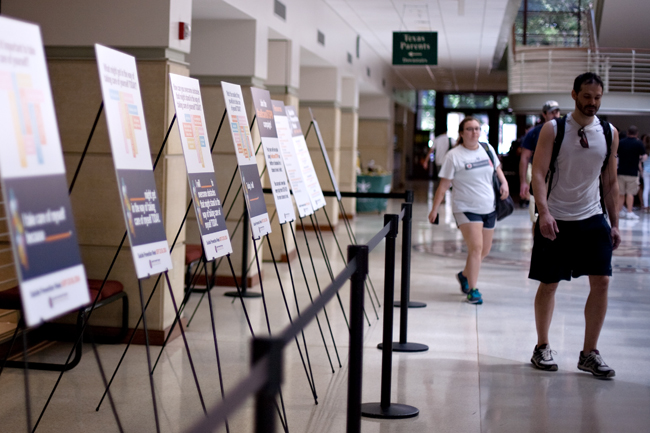In my work as coordinator for the Be That One (BT1) Suicide Prevention Program, I’ve heard countless stories from students about how a suicide or suicide attempt of a loved one has directly impacted their life. I’ve also heard from students who have had thoughts of or attempted suicide in the past and now want to get involved with this issue on campus.
Created in 2008 by the Counseling and Mental Health Center, BT1 has addressed suicide prevention on our campus in a comprehensive manner. We are raising awareness about the issue of college student suicide, and empowering faculty, staff and students to take an active role in preventing suicide. But we can’t do this important life-saving work alone. We need your help. I have hope that if all faculty, staff and students work together, we can prevent suicide. Of students who experience thoughts of suicide, two-thirds of them first tell a friend, partner or family member about their thoughts. This is why it is so important for all students to know how to help a friend. Here are three ways to take action on campus to prevent suicide:
1. Learn to recognize when your friend is having thoughts of suicide. Students who are experiencing mental health distress or thoughts of suicide often communicate through behaviors known as warning signs. BT1 offers one-hour free interactive workshops for all students, faculty and staff about how to talk with and support students who are experiencing mental health distress and/or thoughts of suicide. To find out more and book a workshop, go to cmhc.utexas.edu/bethatone.
2. Choose to respond to a friend in need and connect them to resources. There can be many barriers to talking about suicide with your friend. To help you overcome them, think about motivations for intervening. If you were struggling, would you want someone to say something? If this was your sibling, partner or another loved one, would you want someone to say something? The only way we can 100 percent know if a student is experiencing thoughts of suicide is to ask them directly about it. You can say something like, “Are you having thoughts of ending your life?” Please note that talking about suicide will not put the idea in a student’s head.
If the student says yes, it’s important to validate their feelings. You can say something like “This must be really hard for you. I hear you’re in a lot of pain. I’m impressed you’ve done this well, considering how you’re feeling.” It is important to listen without judgment. Thank the student for feeling safe to disclose their thoughts with you.
The next step to helping the student is to connect them to supportive resources that can help, like CMHC. You can say something like, “I may not be able to understand exactly how you feel, but I want to help. Would you be open to talking with someone about this?” Continue to be there for your friend. If you continue to be concerned for your friend’s safety, contact the Behavior Concerns Advice Line at (512) 232-5050.
3. If you’re struggling, reach out for help. If you’re experiencing thoughts of suicide, reach out for help. Know you’re not alone. CMHC is here to connect you with the supportive resources you need. You can also call the free 24/7 CMHC Crisis Line at (512) 471-CALL (2255). For more information about CMHC, visit www.cmhc.utexas.edu.
Trattner is the suicide prevention coordinator in the Counseling and Mental Health Center.





















